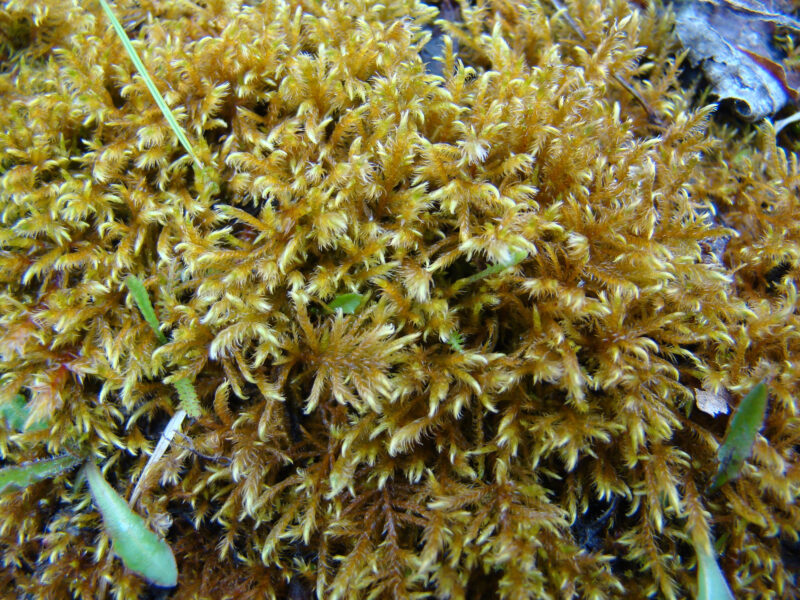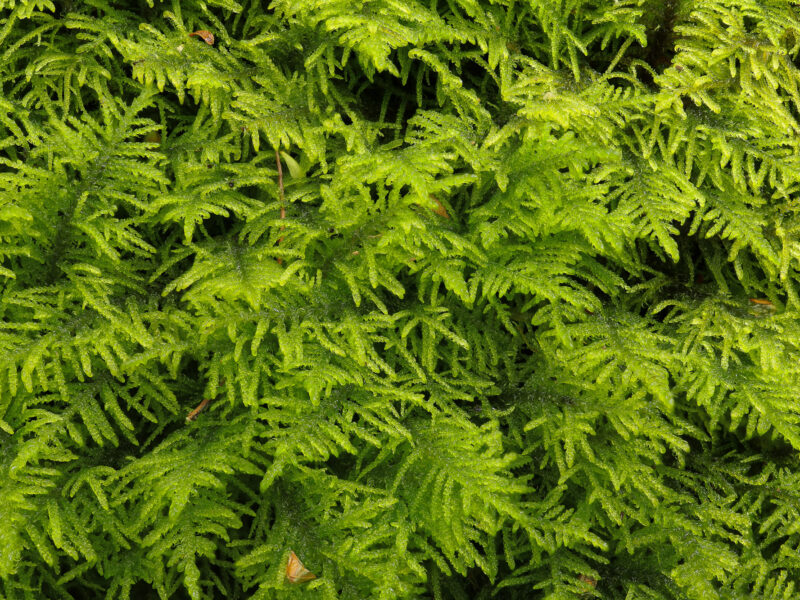Identification notes
A highly variable species, typical forms of Cratoneuron filicinum (such as those shown below) are relatively easy to recognise once known. However, straggly straight-leaved forms may be encountered, especially in relatively wet, lime-rich places such as pond margins and on damp limestone rock faces by watercourses. These forms can be taken for other medium-sized pleurocarps, especially species of Amblystegium and Hygroamblystegium, which also have relatively short mid-leaf cells and, in the case of Hygroamblystegium, a very stout nerve which nearly reaches the tip of the leaf.
C. filicinum has one stand-out feature that separates it from such species but examination of leaves under a microscope is usually needed to see it. Well-defined, usually orange-coloured patches of inflated alar cells are always present, although sometimes they remain on the stem after the leaf has been stripped off. There are some excellent images of this feature below. The leaves of Amblystegium/Hygroamblystegium species are often a similar shape to the branch leaves of C. filicinum (its stem leaves are broader) but they lack such alar groups. Another differentiating character of Cratoneuron is the presence of tiny, leaf-like paraphyllia on its stems (microscope needed!) but, contrary to what the floras say, they are sometimes very sparse and hard to find.
Read the Field Guide account















